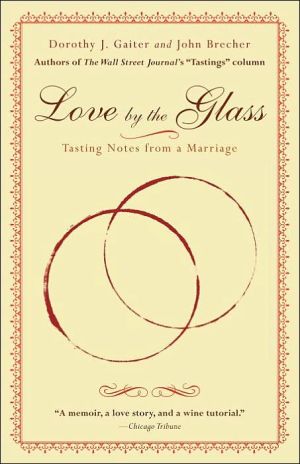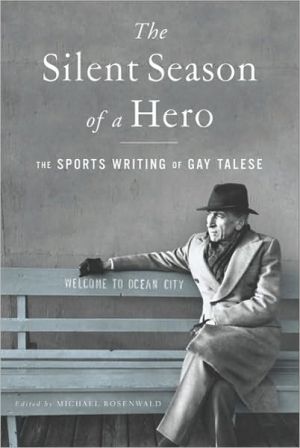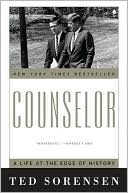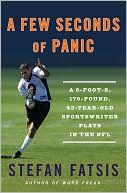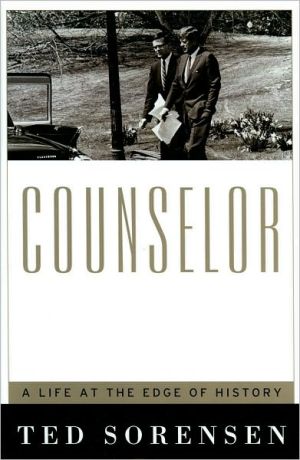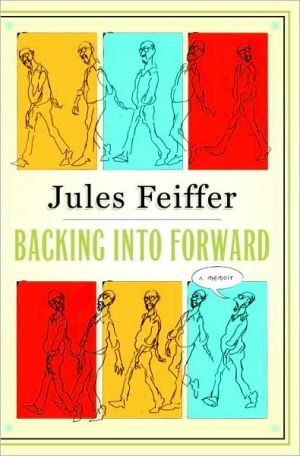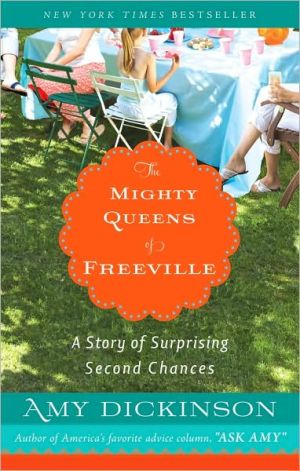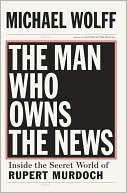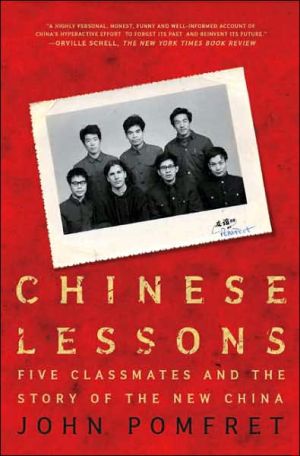Love by the Glass
Love by the Glass is a captivating memoir by the authors of The Wall Street Journal’s weekly “Tastings” column, Dorothy J. Gaiter and John Brecher, who have merged their journalism careers with their love of wine. She grew up in the all-black environment of Florida A&M University in Tallahassee, and he was raised in Jacksonville, where his was one of a handful of Jewish families. Follow Dottie and John from their June 4, 1973, meeting in the newsroom of The Miami Herald to their first...
Search in google:
Love by the Glass is a captivating memoir by the authors of The Wall Street Journal’s weekly “Tastings” column, Dorothy J. Gaiter and John Brecher, who have merged their journalism careers with their love of wine. She grew up in the all-black environment of Florida A&M University in Tallahassee, and he was raised in Jacksonville, where his was one of a handful of Jewish families. Follow Dottie and John from their June 4, 1973, meeting in the newsroom of The Miami Herald to their first “Open That Bottle Night,” which put them on the road to becoming full-time wine columnists. From the André Cold Duck that accompanied their first date to the bottle of Taittinger Champagne smuggled into the delivery room to wet the lips of their newborn second daughter, lovers of books as well as lovers of wine can now join the wine world’s favorite couple as they embark on the ultimate quest for the perfect grape.
Chapter One André Cold Duck\ \ The first wine we shared was André Cold Duck. Hey, don’t laugh. Okay, go ahead and laugh. It was a big deal then, a bizarre concoction with a bizarre label. The name Cold Duck was derived somehow from the German practice of blending already opened bottles of red, white, and sparkling wines so they wouldn’t go to waste. The resulting cuvée was called kalte Ende or “cold end,” which sounds like kalte Ente, which means “cold duck.” In the early 1960s, David Gallo, who was co-president of the E. & J. Gallo Winery and the oldest son of Ernest Gallo, figured there was room in the market for a nationally marketed, inexpensive “domestic Champagne.” So in 1965, when he was working in marketing, he oversaw the development and introduction of André Champagne. Two years later, he developed André Cold Duck, which was a red, sweet sparkling wine made from Concord grapes. By 1971, the winery was selling two million cases of it a year.\ John’s parents gave him a bottle as a housewarming present, and it sat in his refrigerator for months. John was posted to South Dade County, then the more rural part of the county. It turns out that being “South Dade bureau chief” meant he got a tiny little office in a town called Homestead and a massive area to cover by himself. Dottie was a general assignment reporter in the main office, a lumpen structure on Biscayne Bay, where we worked together every Sunday. As the weeks went on, we found it was fun to have lunch together along with a couple of other new reporters. Then we started to wait until the other reporters were out of the office and we would rush off to lunch alone. We could talk for hours, as though we were the only people in the world. We were so much alike in our outlooks and values that it was as though we’d been raised by the same parents. We even had a joint byline together, on a story about the annual New Year’s Eve riot on Miami Beach. While we were dodging tear gas, a sweet thing happened. A drunken reveler stumbled up to us and drawled, “You two are beautiful together, man.” Was it that obvious that there was something between us?\ After months of rushing off together whenever we could, John mentioned to Dottie a story he was doing about U-Pick fields. Those were South Dade farms where you could pick your own food. It was fun, it was cheap, and it was a great story for the Herald’s weekend section. Maybe I could show you the U-Pick fields sometime, John suggested.\ Without knowing it, John had touched Dottie’s most vulnerable area: fruits and vegetables. Dottie is passionate about them. She had inherited that from her mother, whose father had grown cherries, peaches, mint, and corn. The date was set. On a beautiful winter day, we picked squash and lima beans and snap peas and eggplant and the most beautiful strawberries Dottie had ever seen. She sat on the ground and ate them, still warm from the sun, right off the plant. John thought he’d never seen anyone so pure, happy, and beautiful. We took all of the bounty to John’s little one-bedroom apartment. Dottie simply sautéed the vegetables in butter and served them over rice that John had cooked.\ Sweet, sparkling red wine is not a classic match with sautéed vegetables over rice, but that night, on our first date, no wine could have been better. We woke up the next morning as a couple.\ It wasn’t long before we told our parents.\ John: I had mentioned to my parents on the day I arrived at the Herald that I’d started work with two black women, and one was really cute. One night, when my father answered the phone, I said, “I’m actually dating someone.” This surely pleased my father, who was concerned that I had been lonely for all of those months down in Homestead. My parents had visited a couple of times, and they were pretty much appalled by my rental furniture and solitary life. “That’s great!” said my father. “Who is she?”\ “She’s one of the reporters I started with,” I said. “The cute one.”\ There was a momentary pause. “She’s black, isn’t she?” asked my father. “Yes,” I said. My parents didn’t raise the issue again.\ Dottie: When I called home, I told my father I was dating a colleague named John. “We started on the same day, he went to Columbia, and he’s white and really nice,” I said, rushing through the salient part. There was a momentary pause. “Well,” my dad said, selecting his words carefully, “we always taught you to choose your friends by the content of their character.” He had paraphrased Martin Luther King Jr. And that was it.\ In our first years together, we moved around a lot within South Florida. John became an editor and moved up the Herald’s career ladder, from South Dade to North Dade to Palm Beach County and back to Miami. Dottie moved up to bigger reporting jobs, from general assignment in Miami to school reporter in Fort Lauderdale to beat reporter back in Miami. We worked all the time—we were journalists, committed to changing the world, after all, and it was an exciting time for journalism. John’s first front-page byline was about a gas station owner during the Arab oil embargo who forced motorists to buy his daughter’s Girl Scout cookies if they wanted a fill-up. Our nascent interest in wine was our respite.\ We started with Blue Nun. In Florida, supermarkets can sell wine, so when we shopped, we’d walk down a long aisle of so-so wines. In 1974, we certainly didn’t know much about wine, though The Signet Book of Wine had piqued John’s interest, and then Dottie’s. When we were in the grocery store one day, we picked up a wine we’d seen advertised and that we knew to be popular: Blue Nun.\ Blue Nun was a German wine that few Germans drank. It was a Liebfraumilch, which means “Milk of Our Blessed Mother.” It is, in many ways, simply a low-end, generic German wine. As far back as 1910, an official body in Germany declared that Liebfraumilch was nothing but “a fancy name.” The Sichel family of Mainz, Germany, made Blue Nun, and some of it was sold in the United States, even during Prohibition. The label back then showed a nun in a brown habit on a blue background. Peter Sichel, who represents the fourth generation of the family, which later became importers, says that as the wine became popular, customers and distributors started referring to it as “that wine with the blue nun label.” After Prohibition was repealed, sales took off in the United States and the label was changed to read “Blue Nun Label.” But there was a hitch. Because of religious concerns, the federal government, which has to approve all wine labels, decided it couldn’t really allow a nun on the label, so post-Prohibition labels sported a picture of farm girls, Mr. Sichel says. After arguing that other countries with large populations of Catholics allowed the labels to have a nun on them, Mr. Sichel got his way. It wasn’t until 1963, though, that the word label was dropped from the label.\ Blue Nun was low in alcohol, inexpensive, and slightly sweet. For a country that, on the whole, still didn’t know or much like the taste of real wine, it was perfect. Sales went crazy. In 1959, ten thousand cases of it were sold in the United States. By the late 1980s, two million cases of Blue Nun were bought worldwide, 1.2 million of those cases in the United States. In fact, Blue Nun was so popular that one day we even bought a knockoff called Blue Monk. Then White Zinfandel entered the market and started sinking Blue Nun, says Mr. Sichel, who sold the company in 1995. Sales in the United States are now around 250,000 cases, he estimates, adding that the wine still does well in England and Ireland.\ We felt very grown-up with Blue Nun. With cookbooks in our laps, we looked for the right dish to complement the wine. Thick-cut pork chops with sauerkraut and sautéed apples was perfect. With our dinner and a bottle of Blue Nun, we felt very romantic.\ Alone in his office in South Dade, John had the culinary choice each day of either Burger King or McDonald’s, which were across from each other on U.S. 1. One day, a new strip mall opened near the McDonald’s. In a town where very little ever happened, this was news, so John dropped by to check it out as a possible story. He went into one of the stores, which was called Crown Liquors. The store was overwhelming, but exciting. All those different wines. All those different labels. He had no idea what he was doing, but he knew there was no reason to buy Blue Nun, since we could buy it at the supermarket. So he picked up a bottle of wine that was featured next to the cash register. It was white, French, and cheap. That’s pretty much all we remember. It was some sort of generic French wine, three for $9.99. John took three. “If you take a case,” said the man behind the register, “I’ll give you fifteen percent off.” It seemed like a very good deal—that meant it was $2.83 per bottle—and John said sure. The man asked whether he wanted all generic white, or a mixed case with generic red. John took half and half. It was the first case of wine we ever bought.\ When John brought it home, he took all the bottles out of the box and stood them up on his green shag carpet. He waited with even greater anticipation than usual for Dottie to drive up in her little white Toyota, which was less a car than a metal box on wheels. Seeing that clunky car putt-putt up the street always made John smile, and not only because Dottie was in it. Whenever John’s father tried to talk his customers out of buying a Toyota, he’d laugh and say, “Do you know why it’s called ‘Toyota’? That’s what the Japanese called it because it’s a ‘Toy Auto.’ ” When Dottie’s Toy Auto finally arrived that day, John brought her in and showed her the wine. “A whole case!” she exclaimed.\ We had a bottle of white the first night and a bottle of red the second. We had never tasted dry wine before. It was like nothing we could have imagined—crisp and fruity and interesting, yet as real and plainspoken as water. Every night for twelve nights, we opened a bottle of wine to have with dinner. We felt so very grown-up. We began to imagine ourselves as everyday wine drinkers. We imagined a new way of life.\ That life really took hold a few months later, when we met a woman who became very important to us, but whose name we never knew.\ We weren’t living together yet—that would be a huge step, and we weren’t ready—but Dottie spent more time at John’s place than at her own. Sometimes, on assignment, John drove by Dottie’s apartment to see if she was there. If not, he left a note on her door with a drawing of her face on the front, or at least her face as he saw it. There was a small forehead topped by a tiny, somewhat angular Afro. Then there was a big round face, with massive cheeks, huge eyes, and a little nose and a smile. Dottie thought the sculpted hair made her look a little like the Olympic medalist Carl Lewis. John knew it wasn’t perfect yet—those adorable cheeks weren’t quite right—but it was a start.
